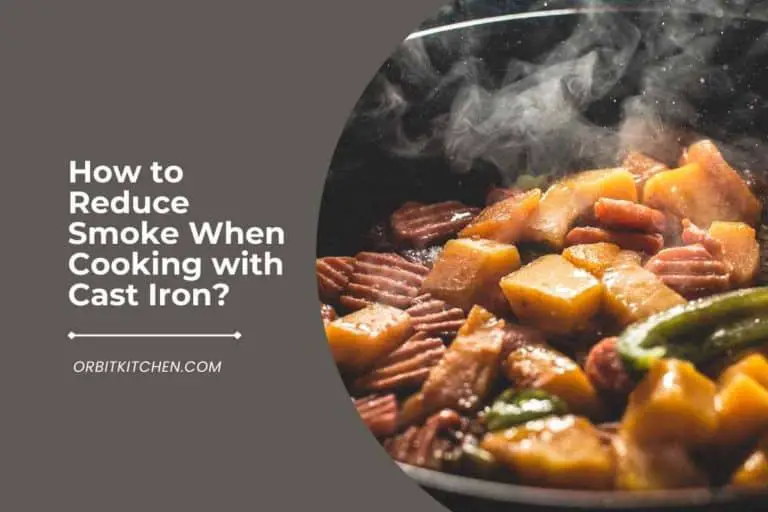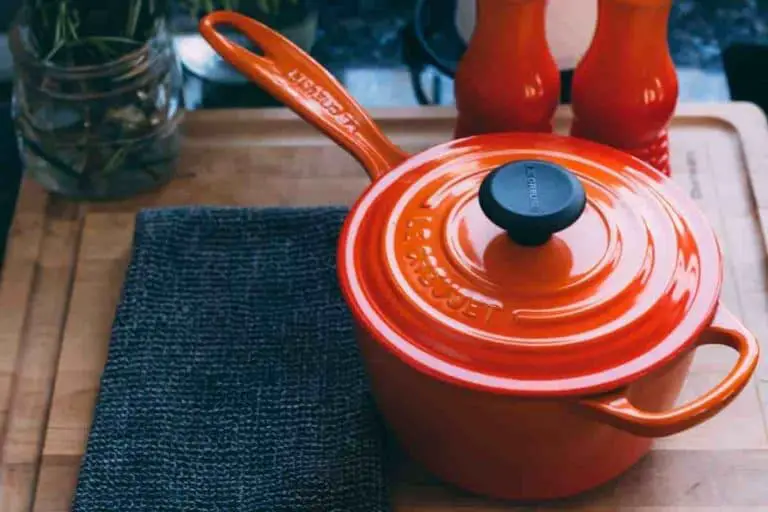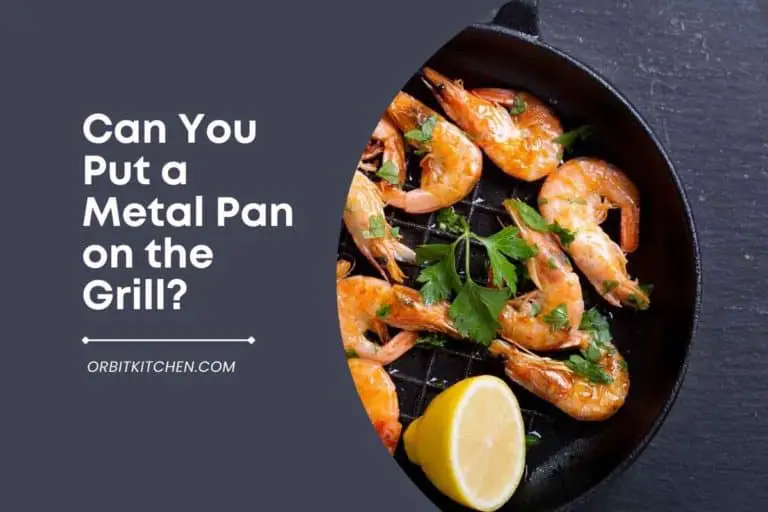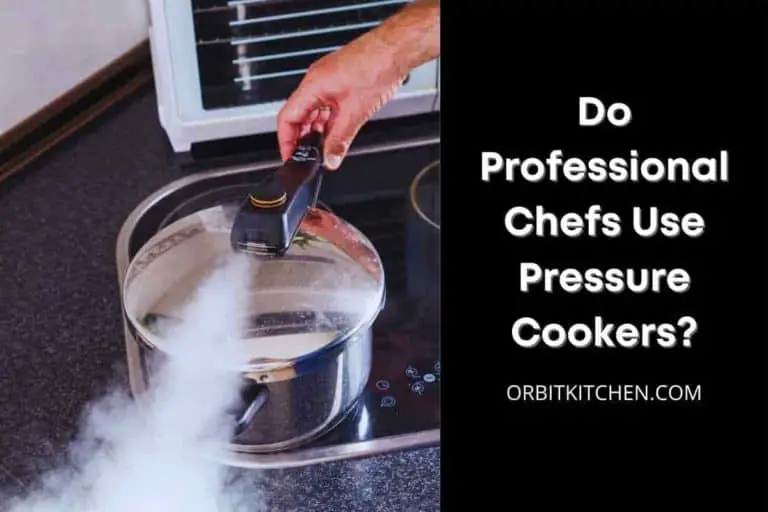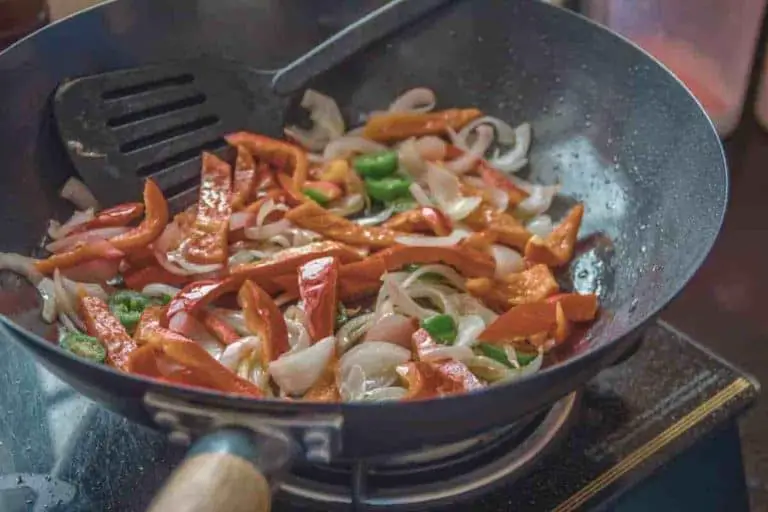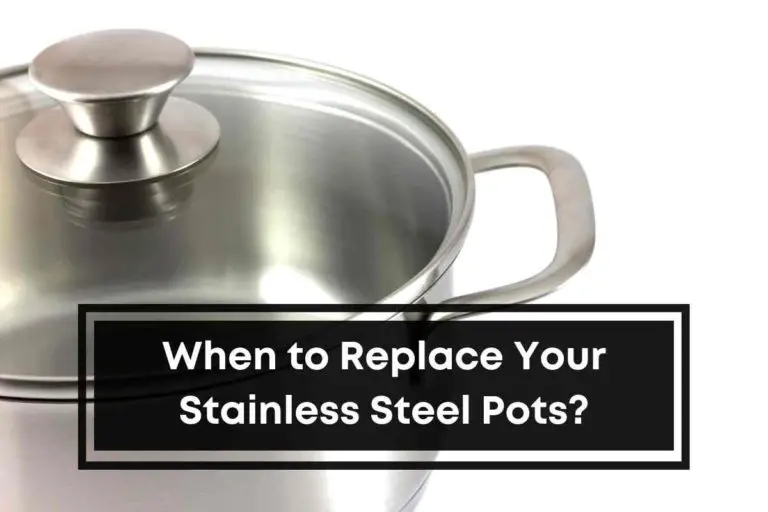How to Season Cast Iron Pan? [Step By Step]
A cast-iron skillet is a classic kitchen staple used for frying, searing, and baking. But before you can start cooking with it, you need to season your pan. Seasoning cast iron is easy to do and only requires a few simple steps.
In this guide, we’ll cover how to season cast iron pan by following different methods like seasoning on stove, oven and how often you should do it, so keep reading to learn more about cast iron seasoning.
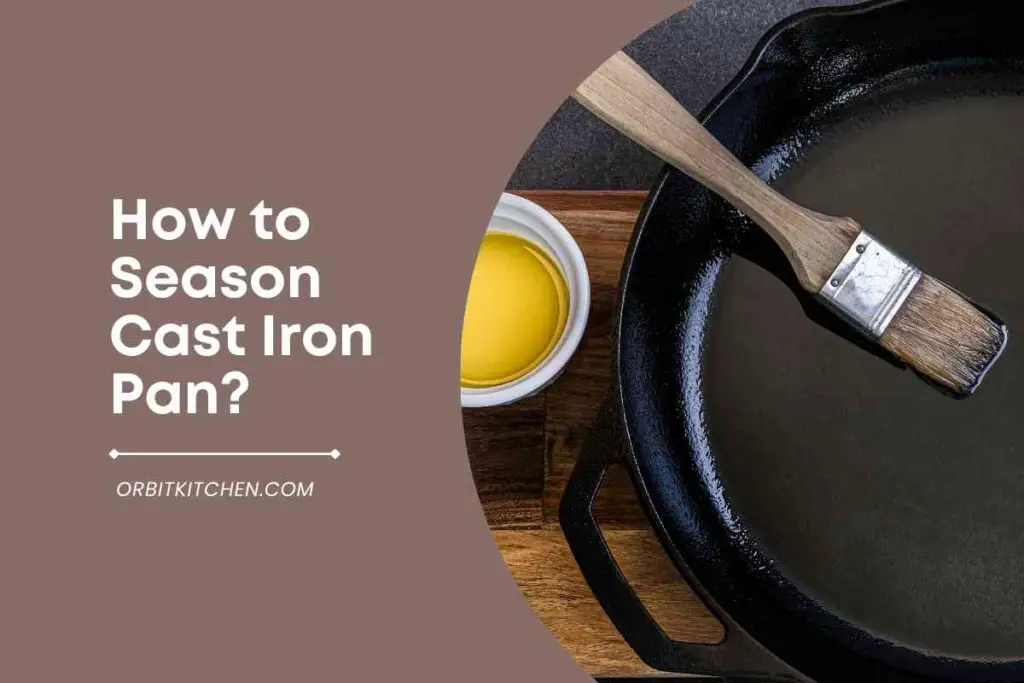
Why Seasoning Is Important?
Seasoning a cast iron skillet is simple and essential. Seasoning creates a natural, non-stick surface on the pan that is durable and easy to clean. Seasoning also helps prevent rust and makes the pan more resistant to sticking.
A well-seasoned cast-iron skillet will have a smooth, dark surface that is soft to the touch. The pan should be evenly seasoned, with no bare spots or flaking. If your pan is new or has been used infrequently, it must be re-seasoned.
To season a cast-iron skillet, start by washing it with hot, soapy water. Dry the pan thoroughly and coat it with a thin layer of vegetable oil or melted shortening. Use a paper towel or clean cloth to spread the oil evenly over the pan’s surface. Place the skillet in a preheated oven (300-400 degrees Fahrenheit) and bake it for 1 hour. Allow the pan to cool completely before using it.
Seasoning your cast iron skillet regularly will help keep it in good condition for years to come.
How Often Should You Season Cast Iron Pan?
Ideally, you should season your pan every time you use it. This will help to prevent rust and keep the pan’s surface smooth. If you don’t have time to season the pan every time you use it, aim for at least once a month.
If you notice that your cast iron pan is starting to look dull or rusty, it’s time to give it a good seasoning. To season the pan, simply rub some oil into the surface and then bake it in a preheated oven for about an hour.
Seasoning your cast iron pan is essential for maintaining its condition and preventing rust. By following this simple guide, you can ensure that your pan will last many years.
What Are The Best Oils for Seasoning?
If you’re looking to season your cast iron pan, there are a few different oils you can use. Each oil has its benefits, so it’s essential to choose the right one for your needs. Here are a few of the best oils for seasoning:
Flaxseed Oil: Flaxseed oil is excellent for creating a non-stick surface. It’s also very resistant to high temperatures, making it ideal for use with cast iron pans.
Coconut Oil: Coconut oil is another excellent choice for seasoning cast iron pans. It has a high smoke point and creates a beautiful sheen on the pan’s surface.
Vegetable Oil: Vegetable oil is an excellent all-purpose option for seasoning cast iron pans. It’s inexpensive and easy to find and works well for most people’s needs.

If you are looking to season your cast iron skillet, I highly recommend Caron & Doucet – Ultimate Cast Iron Set: including seasoning oil, cleaning soap & restoring scrub. Try Caron & Doucet.
How to Season Your Cast Iron Pan?
If you’re new to using cast iron cookware, you might be wondering how to season a cast iron pan. Seasoning is simply creating a smooth, non-stick surface on the pan that will help prevent rust and make it easier to cook with. At the same time, it might seem daunting, but seasoning a cast iron pan is relatively easy.
There are a few different methods that you can use to season a cast iron pan, but the most common is to rub it down with oil and then bake it in the oven. First, give your pan a good scrub with warm water and soap. This will remove any residue or dirt that might be on the surface. Next, dry the pan completely and then rub it down with a light layer of vegetable oil or shortening.
Once the pan is coated with oil, place it upside down on the top rack of your oven and preheat the oven to 350 degrees Fahrenheit. Let the pan bake in the oven for about an hour or until the surface appears dark brown and slightly glossy. Allow the pan to cool completely before using it for cooking.
How to Restore an Old Cast Iron Pan?
You can restore the old cast iron pan by scrubbing and removing the rust and cleaning it. After that, if you properly season your cast iron pan, it will become much easier to clean, and the seasoning will help it retain its heat.
How to Season Cast Iron on Stove?
If you’re looking to season your cast iron on the stove, you want to season it without an oven, or you don’t have an oven. The process is simple, and there are a few things you’ll need to do.
- First, scrub the pan to remove dirt or rust and wash it properly.
- Dry the pan for around 10 to 15 minutes.
- Next, rub a thin layer of vegetable oil all over the cookware, making sure to get into all the nooks and crannies.
- Now, place the cast iron on the stove over low heat.
- Add a little oil to the pan and spread it with a paper towel.
- Increase the heat to medium and cook the pan for a few minutes.
- Remove the pan from the heat and let it cool.
- Repeat this process a few times to season the pan.
What Temperature to Season Cast Iron?
When it comes to seasoning cast iron, the temperature you use is essential. If it’s too hot, the oil will smoke and give your food a burnt flavor. If it’s too cold, the oil won’t adhere to the pan’s surface, and your food will stick. The best temperature to season cast iron is 375 and 400 degrees Fahrenheit.
One thing to remember is that the higher the temperature, the quicker the seasoning process will be. So if you’re in a hurry, you can crank up the heat and finish it quickly. But if you have the time, there’s no harm in seasoning at a lower temperature.
Another thing to consider is that some people prefer to season their cast iron multiple times at lower temperatures rather than just once at a higher temperature. This creates a more durable seasoning that can better withstand high heat cooking.
How to Season a Rusty Cast Iron Skillet?
If you’ve inherited a rusty cast iron skillet or found one at a flea market, don’t despair! With a bit of elbow grease and some know-how, you can turn that rusted hunk of metal into a smooth-working kitchen tool.
The first step is to season the skillet. Seasoning creates a barrier between the metal and food, preventing sticking and rusting. It also adds flavor and makes cleanup easier.
Here’s how to season a rusty cast iron skillet:
- Start by scrubbing the skillet with hot soapy water and a stiff brush to remove rust. Rinse it well and dry it thoroughly.
- Next, heat the skillet on the stovetop over low heat for about 10 minutes to open up the pores of the metal.
- Once the skillet is heated, rub it all over with a thin layer of cooking oil. We like to use vegetable oil, but you can also use melted shortening or lard. Be sure to get into all the nooks and crannies!
- Finally, place the skillet in a preheated 350°F oven on the top wire rack for 1 hour.
Caring for Your Seasoned Cast Iron Pan
If you’ve recently purchased a cast iron pan, or if you’ve been using one passed down in your family for generations, it’s essential to know how to take care of it. A properly cared for cast iron pan will last a lifetime.
Seasoning your pan is the first step in taking care of it. Seasoning creates a protective layer that prevents the pan from rusting and makes it non-stick. To season your pan, simply rub it with a light layer of cooking oil and bake it in a preheated oven for 30 minutes.
Once your pan is seasoned, it’s important to keep it that way. Always wash your pan with hot water and mild soap after each use. Avoid using harsh detergents or putting your pan in the dishwasher, as this can strip away the seasoning. If food sticks to your pan, simply soak it in hot water for a few minutes before scrubbing with a brush or sponge.
Conclusion
I hope you like this post, “how to season the cast iron pan.” A cast-iron pan can last for years and become a kitchen staple with proper seasoning. Seasoning your pan is easy and only requires a few simple steps.
The most important thing is to be patient and not rush the process. By taking the time to season your pan correctly, you’ll be rewarded with a piece of cookware that will perform beautifully for years to come.
Related Posts:

